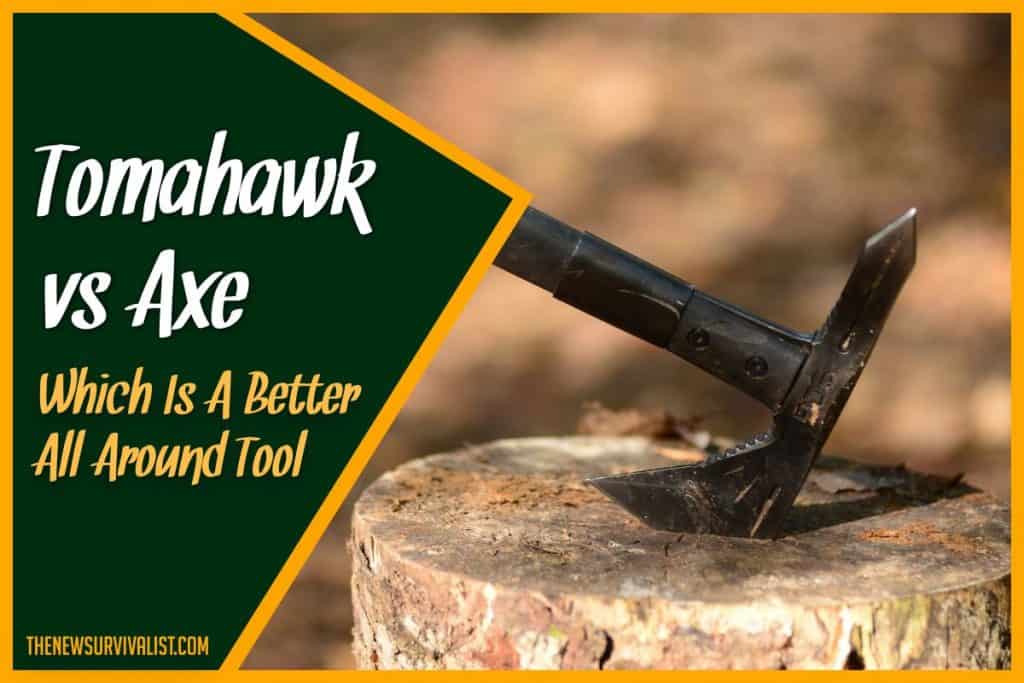Tools are usually made with a specific function in mind, which means there is no true all-around tool. For preppers staying in one location, it is possible to keep multiple kinds of tools to aid in accomplishing the task at hand.
The tomahawk and the axe may look similar but have completely different areas where they perform best. However, based on the number of tasks in which one excels, the tomahawk is a clear winner.
There are many types of axes and tomahawks. In this article, we will be comparing the traditional tomahawk used as a tool, and not as a weapon, and match it against a full-length axe.
Tomahawk
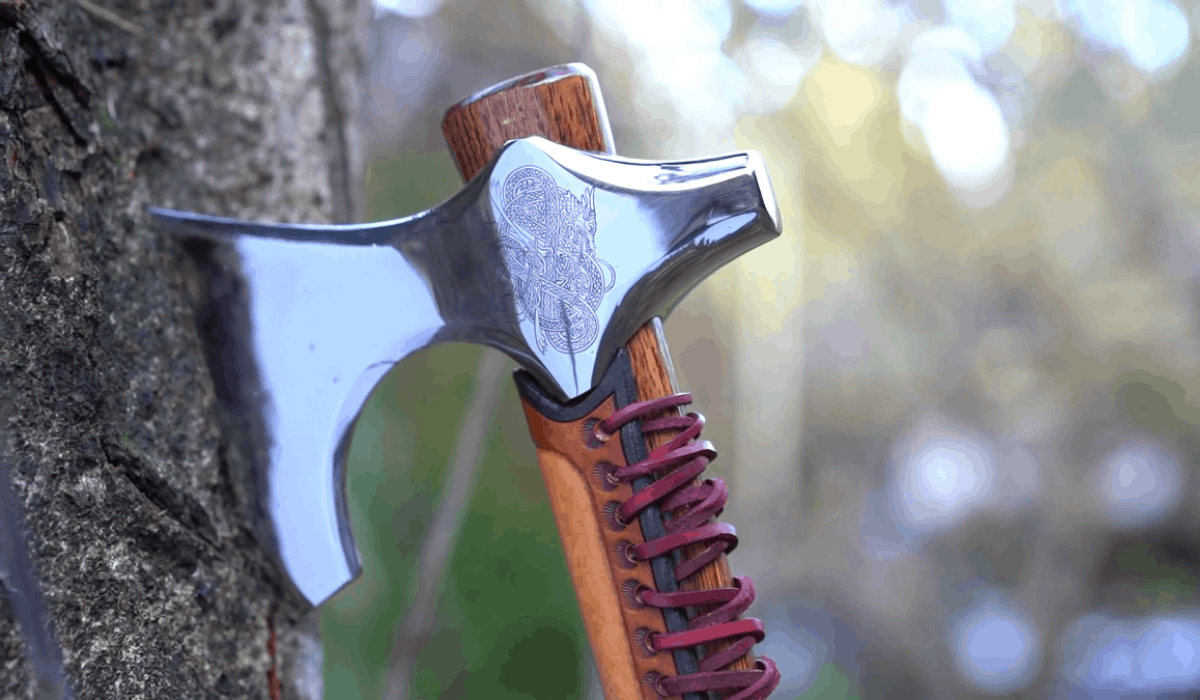
A tomahawk is a bladed tool attached to a heft (handle) traditionally made of wood. It’s typically used for tasks that require cutting with a sharp edge. Its steelhead is thin and curves more than an axe. The backend of the blade can either be a spike or a hammer. A tomahawk’s eye, which is the hole where the heft inserts are often rounded.
Its heft becomes wider in diameter as it reaches the top part. The reason for this is that the steelhead is inserted from the bottom of the handle, and pushed upwards until it is held in place by the widened part of the heft. Due to this, it is easier to replace the broken handle of a tomahawk when out in the wilds.
The length of a tomahawk’s handle varies from 16 inches up to more than 21 inches. Unlike the axe, its handle is typically rounded and straight, without a knob at the bottom.
Axe
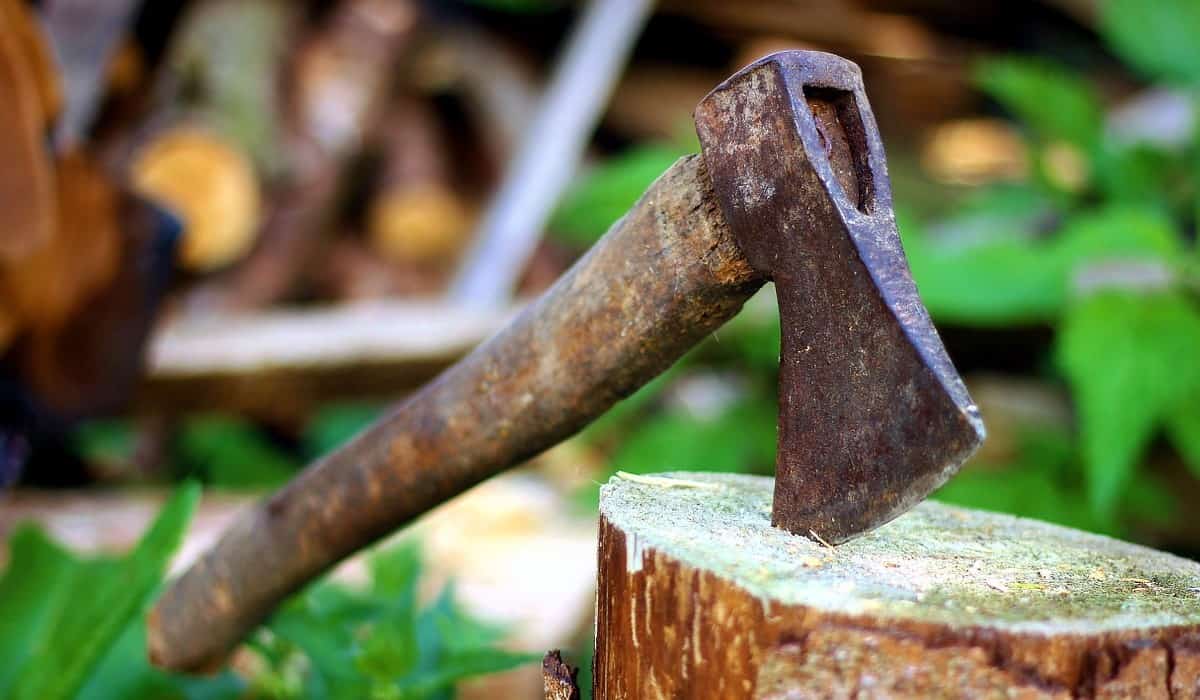
Similar to a tomahawk, an axe is a bladed tool attached to a heft made of wood. Its steelhead is heavier, denser, wider, and less curved compared to a tomahawk’s. Additionally, the steelhead is fatter and shaped like a wedge. The back of the blade is blunt and flat.
The axe’s eye is wedged shaped. Compared to a tomahawk’s handle, the axe’s heft is carved at the top to accommodate the steelhead. It is then secured by driving a wedge on the top part of the axe to tighten the fit of the steelhead on the handle.
On top of this, the axe’s handle is usually longer, at more than 20 inches up to 31 inches in length. The handle is squared and has a knob at the bottom that functions to keep the hands from slipping when chopping wood.
Tomahawk vs. Axe Compared
These two tools will be compared based on the following tasks that are essential in a survival setting.
- Felling a tree
- Chopping and splitting wood
- Cutting branches
- Carving wood
- Field dressing a game
- Cooking
- Clearing an area/path
- Building a shelter
Felling a Tree: Axe
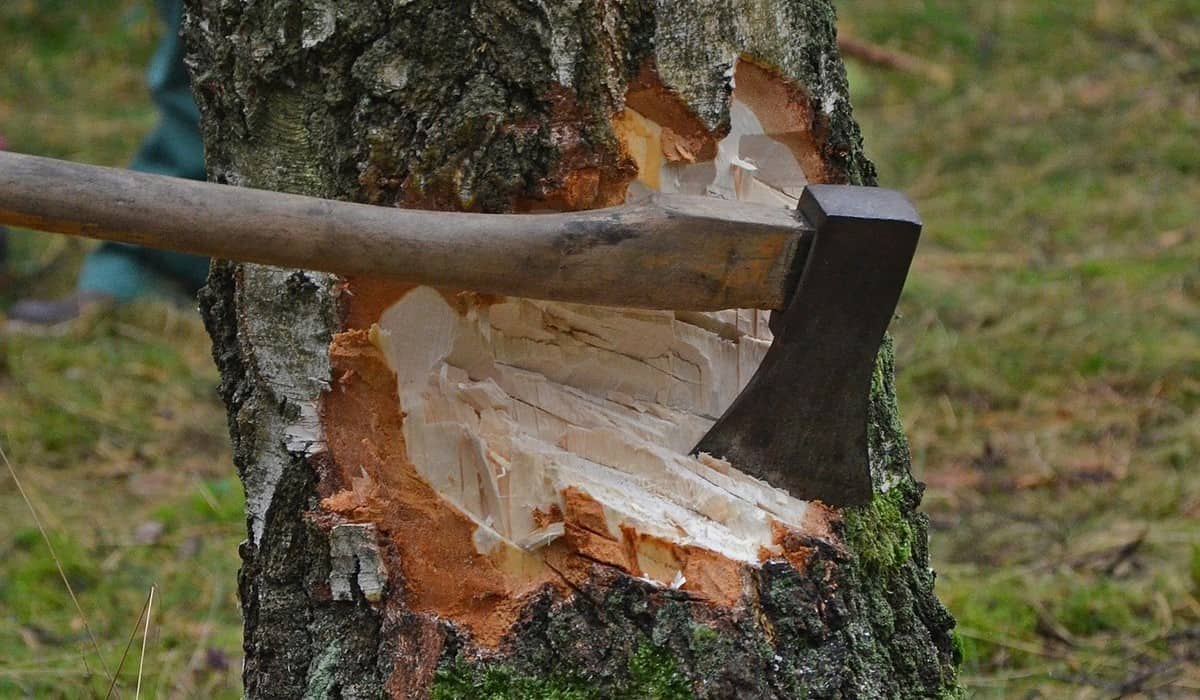
The winner in this category is the axe. It is no surprise since it was made for this purpose. Its wedged-shaped, dense steelhead and its long handle make it an efficient tool for cutting down a tree. Its long handle is made for a wider backswing which increases the force of impact, digging deeper into a tree trunk.
Additionally, its dense head and handle absorb the force much better, easing up the vibrations that travel into the user’s arms, which prevents easy fatigability.
In comparison, the tomahawk can also be swung with a wide backswing to increase its force. However, the length of its handle, the lack of a knob, and the relatively lighter steelhead limit the force of impact compared to an axe. On top of this, its thin blade digs too deep and will often get stuck. There will also be more vibrations transferred that can easily tire one’s arms.
Chopping and Splitting Wood: Axe
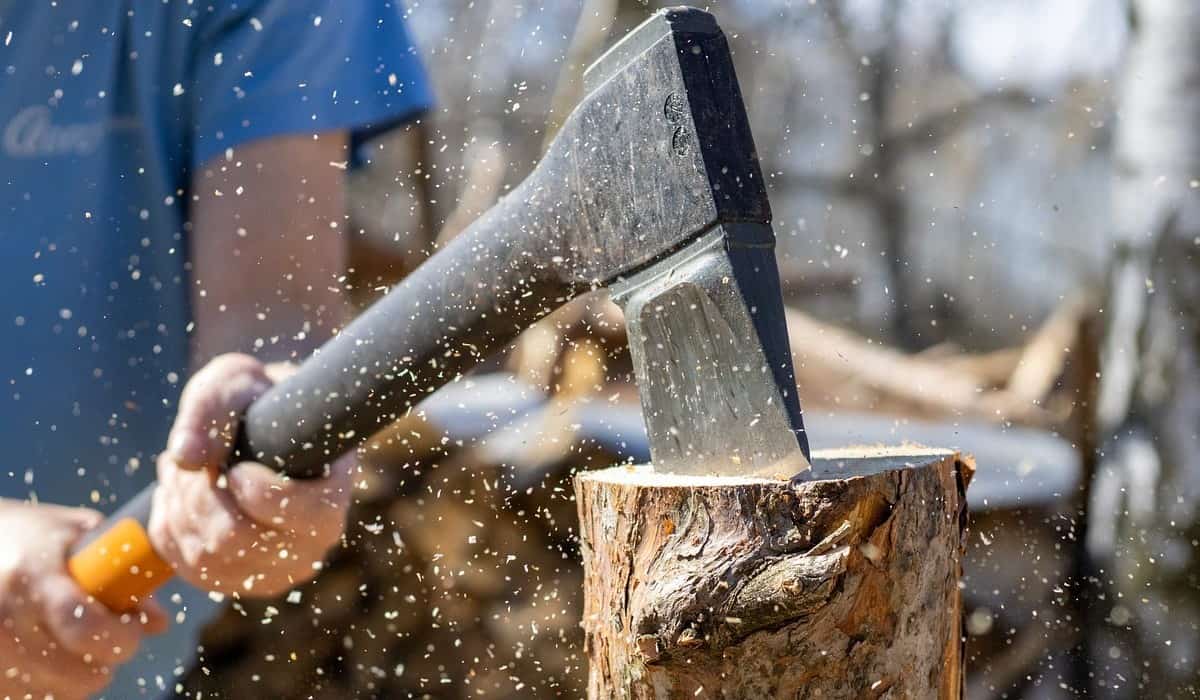
Again, the axe is the clear winner because its design was made for this purpose. The wedge-shaped design of the steelhead easily chops and splits wood in half without getting stuck. Its long handle and the knob at the bottom of the heft makes it easier to swing the axe properly.
The tomahawk on the other hand can still be used for chopping and splitting wood. However, due to its thinner blade, it’s harder to split wood, and would often get stuck in it. Furthermore, since its head is lighter, it cannot produce the same impact as the axe when used for chopping.
Cutting Branches, Carving Wood, Field Dressing, Cooking, Clearing an area/pathway and Building a Shelter: Tomahawk
Unfortunately, this is where the axe stops excelling. For the rest of the survival tasks, it is the tomahawk that holds the advantage. The main reason why an axe loses out from these tasks is due to its weight, and size. It can’t be efficiently held on one hand, and its weight and size make it difficult to use on tasks that require more control.
To reiterate, we are comparing a full-sized tomahawk and a full-sized axe. Since we are looking to find out which is a better all-around tool and it would be inappropriate to use different types to compare different tasks. As such, we are sticking to comparing only one type from each category.
-
Cutting Branches
The tomahawks lighter steelhead and thinner blade make it easier to wield using one hand. Due to the lighter head, it can also be held at the middle of its heft, to swing it in much tighter spaces. Furthermore, it can be used on top of trees since it doesn’t need a stable footing to swing it properly.
-
Carving Wood
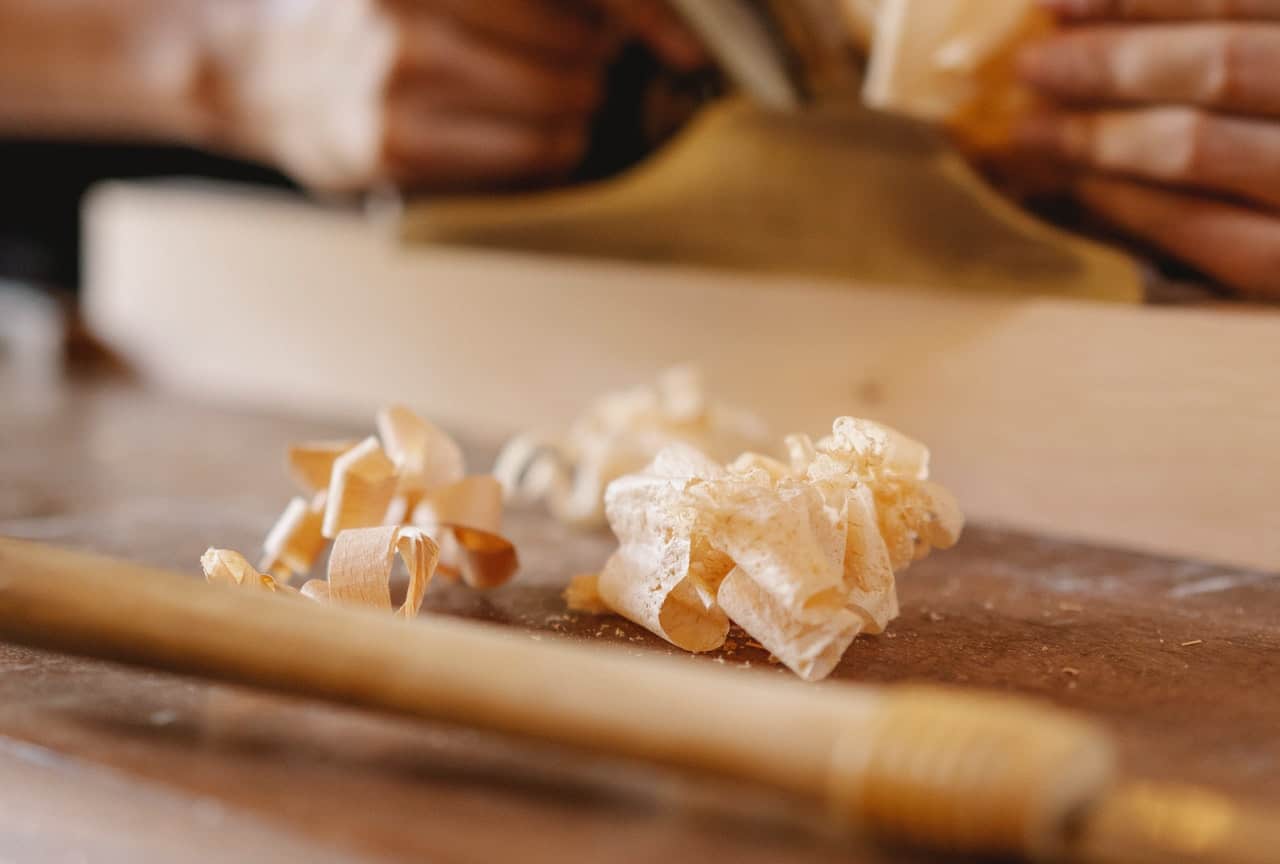
The thin and light head of the tomahawk can be easily removed and used to carve wood. Its heft can even be modified to turn the tomahawk into an adze, a tool with a cutting edge perpendicular to the handle rather than parallel used for smoothing out logs, and as a makeshift hoe.
-
Cooking and Field Dressing

Since it is easy to remove the tomahawk’s blade, it can be used as a knife for preparing ingredients for cooking. Unlike the heavy axe head, the tomahawk’s thin blade is easier to use in tasks that require more finesse. It can be used effectively to field dress hunted animals which require careful removal of the innards, without accidentally puncturing the intestines. Also, it can be used to peel fruits and skin wild game.
-
Clearing an Area
Aside from its ease of use for cutting down branches, it is also easier to use a tomahawk for clearing bushes and vegetations. Being able to hold and use it with one hand makes the tomahawk efficient at this task.
The hammer at the back of its blade can be used to breakdown rocks. An axe cannot be used for this purpose since it will loosen the fit of its head. For the tomahawk, this is not much of an issue since it is easier to retighten its steelhead.
-
Building a Shelter
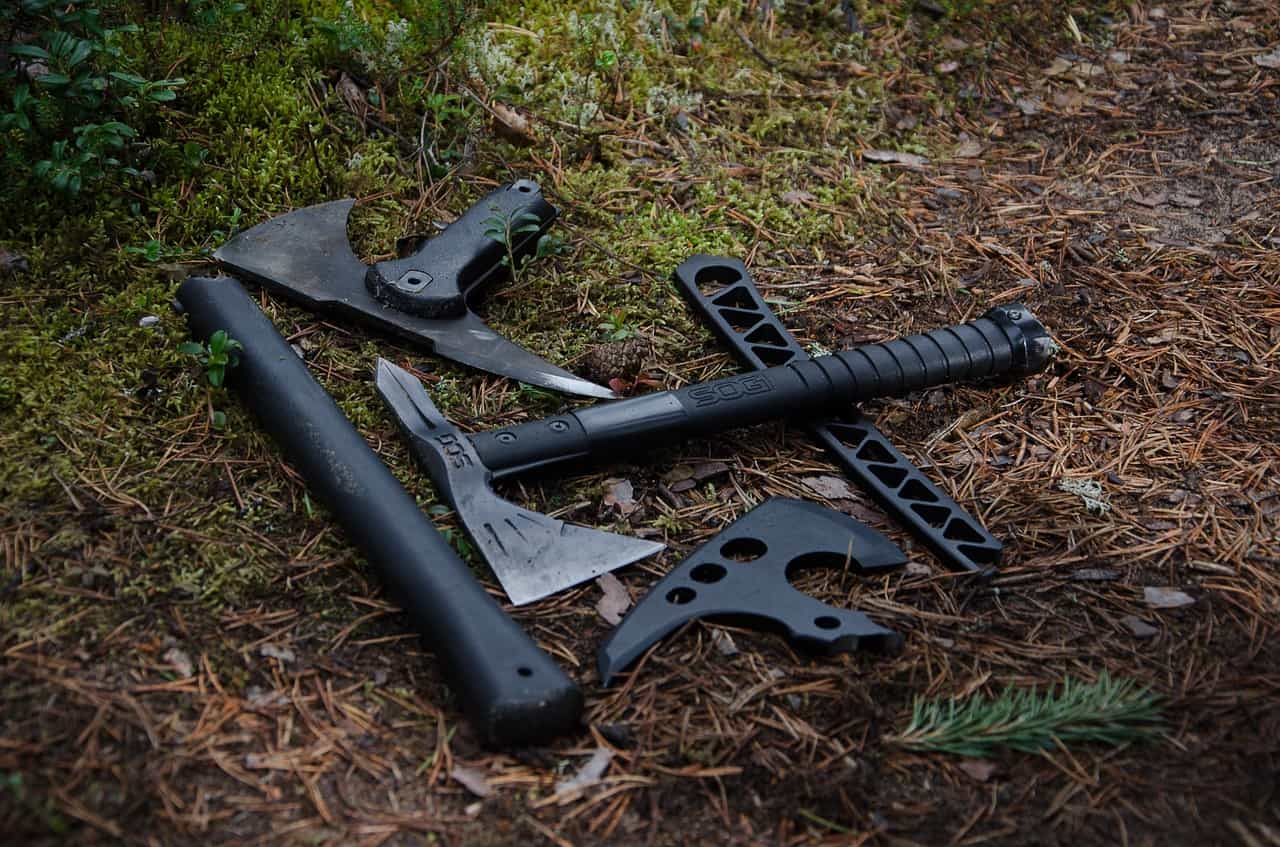
Building a shelter requires the combination of different functions in which the tomahawk excels on most of it. It requires the combination of felling a tree, chopping wood, carving wood, clearing an area, and hammering spikes. All of which combined can only be done by a tomahawk.
Other sources would also compare these two tools in the context of self-defense and hunting. Most would often cite the tomahawks use as a throwing weapon. However, in a survival setting, throwing away your tool is a poor action to take, and it’s better to bring other forms of protection than to use an axe or a tomahawk for self-defense.
Ultimately, the tomahawk’s weight and size make it a better all-around tool compared to a full-length axe. It’s a versatile, lightweight tool that should be preferred over the axe when venturing out into the wild.

